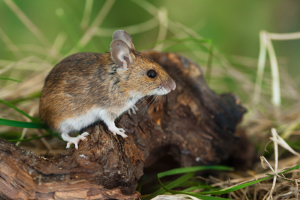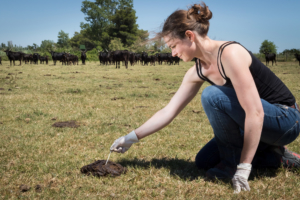Antibiotic resistance in wildlife
Objectives
The aim of this project is to understand the role played by wild species in antibiotic resistant bacteria dynamics. We focus on three principal questions:
- Which resistant bacteria circulate in wildlife in the Camargue?
- Are these bacteria the same as found in humans?
- Are there species or habitats that are particularly favourable for maintaining and disseminating these bacteria?

Methodologies applied
Our work is based on summarising scientific articles and taking bacteria samples from rodents and gulls in the Camargue. To take the samples, we capture individuals and collect faecal samples from which we cultivate bacteria in environments with or without antibiotics. The bacteria are then identified and an antibiogram is generated to establish more precisely the antibiotics to which they are resistant. A genetic analysis of the strains is then conducted to determine:
- if they are close to human strains;
- the resistance mechanisms involved;
- the genetic media underlying these mechanisms.
Results
Knowledge of the antibiotic resistant bacteria found in wildlife is still quite limited. Data in the literature show that there is a frequency and diversity gradient in the antibiotic resistant bacteria found, ranging from the areas most heavily impacted by human activities, which are the most concerned, to the best-preserved areas. Predators and anthropophilic species are the species that most frequently carry these bacteria.
We have observed bacteria resistant to the latest generations of antibiotics (carbapenems) in Yellow-Legged Gulls (Larus michahellis), living close to human activities, but not in Slender-Billed Gulls (Chroicocephalus genei), which feed far from the coast. We are currently continuing our research on rodents to better understand the spatial distribution of antibiotic resistant bacteria in the Camargue.
Team
- Project leader: Marion Vittecoq [1]
- Staff involved: Thomas Blanchon [2], Jocelyn Champagnon [3], Olivier Boutron [4]
- Themes: EcoHealth & Wetlands Dynamics and Water Management
- Date of project: Since 2012
Partners
Technical partners
- UMR (CNRS/IRD/Université de Montpellier) – MIVEG [5]EC
- CHU Montpellier [6]
- Labco Midi [7]
- Kristianstad University [8] (Sweden)
Financial partners
Publications
- Vittecoq M., Laurens C., Brazier L., Durand P., Elguero E., Arnal A., Thomas F., Aberkane S., Renaud N., Prugnolle F., Solassol J., Jean-Pierre H., Godreuil S., Renaud F. 2017. VIM-1 carbapenemase-producing Escherichia coli in gulls from southern France. Ecology and Evolution. doi: 10.1002/ece3.2707
- Vittecoq M., Andremont A., Armand-Lefèvre L., Bollache L., Gandon S., Hartmann A., Perino L., Renaud F., Roche B. Quand la résistance s’organise face aux antibiotiques. In Écologie de la santé : pour une nouvelle lecture de nos maux. Blanc S., Boëtsch G., Hossaert-McKey M., Renaud F. Editions le Cherche Midi Paris, 192 p.201
- Aberkane S., Compain F., Decré D., Pantel A., Vittecoq M., Solassol J., Bouzinbi N., Jean-Pierre H., Godreuil S. 2017. Persistence of blaCMY-2-producing Proteus mirabilis in two gull colonies at a 1-year interval in Southern France. Journal of Global Antimicrobial Resistance 9:138–140.
- Vittecoq M., Godreuil S., Prugnolle F., Durand P., Brazier L., Renaud N., Arnal A., Aberkane S., Jean-Pierre H., Gauthier-Clerc M., Thomas F., Renaud F. 2016. Review: Antimicrobial resistance in wildlife. Journal of Applied Ecology 53: 519-529.
- Aberkane S., Compain F., Decré D., Dupont C., Laurens C., Vittecoq M., Pantel A., Solassol J., Carrière C., Renaud F., Brieu N., Lavigne J.-P., Bouzinbi N., Ouédraogo A.-S., Jean-Pierre H., Godreuil S. 2015. High prevalence of SXT/R391-related integrative and conjugative elements carrying blaCMY-2 in Proteus mirabilis from gull isolates in the South of France. Antimicrobial Agents & Chemotherapy 60: 1148-1152. doi: 10.1128/AAC.01654-15.
- Aberkane S., Compain F., Barraud O., Ouedraogo A.-S., Bouzinbi N., Vittecoq M., Jean-Pierre H., Decré D. & Godreuil S. 2015. A non-O1/non-O139 Vibrio cholerae avian isolate co-carrying the blaVIM-1 and blaVIM-4 genes, France. Antimicrobial Agents and Chemotherapy 59: 6594–6596.
